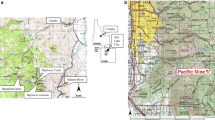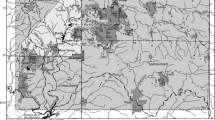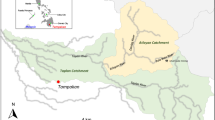Abstract
The Keno Hill mining district in central Yukon was the second largest silver producer in Canada with mines operating from 1913 to 1989 on more than 65 vein silver deposits. The seven and a half decades of mining activities have generated large volumes of mine waste disposed on the land surface, resulting in elevated metal contents in numerous small drainages. To assess the extent of metal mobilization, old mine workings and the associated mine waste were examined and the water courses draining to a major river valley sampled. The results of field observations and an array of water and sediment analyses led to three major conclusions. 1. Acid mine drainage is not widespread because of galvanic protection of pyrite from oxidative dissolution and neutralization by carbonates in the country rock. 2. Mechanisms operative to limit aqueous metal transport in small streams in the district include cryogenic precipitation, coprecipitation and sorption. 3. The near-surface concentration of metals limits the options of waste disposal in future mining developments due to potential metal-leaching problems.
Similar content being viewed by others
Author information
Authors and Affiliations
Additional information
Received: 12 December 1995 · Accepted: 26 March 1996
Rights and permissions
About this article
Cite this article
Kwong, Y., Roots, C., Roach, P. et al. Post-mine metal transport and attenuation in the Keno Hill mining district, central Yukon, Canada. Environmental Geology 30, 98–107 (1997). https://doi.org/10.1007/s002540050137
Issue Date:
DOI: https://doi.org/10.1007/s002540050137




